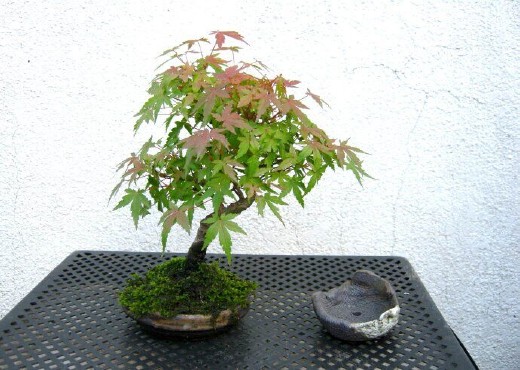The processing and modeling method of bonsai tree embryo
Saplings cultivated from an early age usually begin to process and shape after 3 to 5 years, while stumps excavated in the mountains can be processed and modeled after a year of embryo cultivation. Before processing, the tree embryos planted on the ground can be dug up and temporarily planted in pots of suitable size for operation and modeling. Large tree embryos can also be processed on the spot. Processing and production should follow a series of artistic techniques of bonsai creation, carefully observe and deliberate the tree embryo material first, and decide what kind of theme and how to shape according to the characteristics of the material, that is, "material treatment". The skeleton of the radicle, stem and branch of the tree is arranged according to the law of bonsai art, so as to make it a living bonsai art with coordinated symmetry, beautiful lines and far-reaching artistic conception.

If the pine tree is selected as the material, it is suitable to show the vigor and straightness of the main root, the branches and leaves are flat and unfolded in the shape of clouds, the cypress is suitable to show that its trunk is clumsy and strange, the branches and leaves are clustered, the plum blossom shape should be sparse and oblique, and the spring should be arched. This is considered from the natural characteristics of tree species.
In addition, we should also consider the inherent shape of the stump. For example, the trunk of some stumps is straight and can be made into a straight type; some stumps are naturally curved and suitable for making curved trunks or cliff types; and some stumps are bald and bald. It is suitable to make a withered peak. Due to wood treatment, bonsai production can not only save labor, but also have natural wild interest. If you completely let nature take its course, there will be no bonsai art, but the artificial traces are too much, but it loses its natural beauty. Therefore, for the shape of the stump, we must not stick to the rules and apply the pattern.
Modeling and processing methods also have a certain degree of procedure, usually the trunk first and then the branches, and the climbing, pruning or carving from bottom to top can be determined according to the needs of tree species and modeling. Due to the different habits in different regions, the processing methods are also different.
Generally speaking, climbing is the main method for pine and cypress and tree species with weak germination ability. Tree species with strong germination, such as hammer elm, Finch plum, Fujian tea, triangle maple and so on, can be pruned mainly. The stump processed by the climbing method is free in shape, tortuous and changeable, and the forming is faster; the stump processed by the pruning method is natural, but the forming is slow. In the south, the climate is warm and the trees grow fast, which is suitable for pruning, while in the north, the climate is cold and the trees grow slowly, which is suitable for climbing.
Of course, these are generally speaking, the styles and schools of bonsai are different from each other, and their modeling methods are very different, such as the Lingnan School adopts the pruning method of "storing branches and cutting off the stem", the Yang School adopts the climbing method of "one inch and three bends", the Su School uses the "rough tie and fine cut" modeling method, the Hui School uses the "zigzag bending" modeling method, and the Sichuan School uses the "square turn" or "turn off" method, and so on. We master the most basic methods of pruning and climbing, and flexibly master them according to specific conditions, which can often produce ideal results.
Time: 2019-06-12 Click:
- Prev

Pruning and binding techniques of Plum Blossom Bonsai
Bonsai production requires certain skills and experience. If you want to create a bonsai with strong ornamental value, you can't do it without five or six years of cultivation and modeling skills. The two key techniques in bonsai modeling are pruning and binding. Pruning skills: some early woody flowers with flowers before leaves
- Next

Pose technique of Acer maple bonsai
Small deciduous trees of the genus Acer of the family Acer with dark gray bark and thin branchlets; young branches turquoise and slender. Purple flowers, purplish red when Samara is tender, yellowish brown when ripe, wings spreading into obtuse angles. Nutlets globose, veined conspicuously; wings and nutlets open at an obtuse angle. Like light, warm and humid climate, cold resistance is not strong
Related
- Fuxing push coffee new agricultural production and marketing class: lack of small-scale processing plants
- Jujube rice field leisure farm deep ploughing Yilan for five years to create a space for organic food and play
- Nongyu Farm-A trial of organic papaya for brave women with advanced technology
- Four points for attention in the prevention and control of diseases and insect pests of edible fungi
- How to add nutrient solution to Edible Fungi
- Is there any good way to control edible fungus mites?
- Open Inoculation Technology of Edible Fungi
- Is there any clever way to use fertilizer for edible fungus in winter?
- What agents are used to kill the pathogens of edible fungi in the mushroom shed?
- Rapid drying of Edible Fungi

